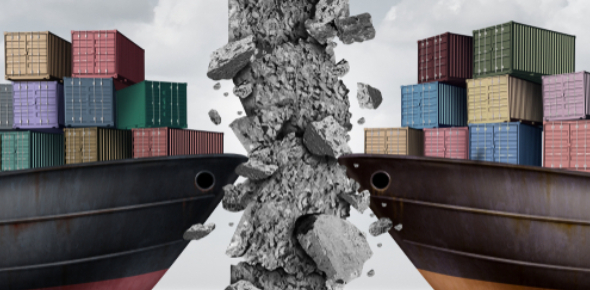

Answer the following questions on globalization and protectionism:
Why does the government create trade barriers if they can potentially hurt a worker in an economy (due to lower wages)?
According to Greenlaw and Shapiro (2018), there are several ways that the government can use to control trade. They include protectionism, import quotas, and nontariff barriers. The problem is that when the country gets rid of trade barriers in some of the areas, it leads to some job loss in the same area. Therefore, the government creates trade barriers in order to protect local employment, to earn more money on tariffs, to improve the trade deficit, and to protect industries that are in their early stages of development.
What can be done to avoid trade barriers?
First of all, governments of different countries can sign free trade agreements. Such agreements are one of the most common ways to avoid trade barriers because they promote seamless trade. Also, the government can also choose to reduce nontariff barriers and rationalize regulations.
As a consumer, what are your experiences with trade barriers?
I moved to China a little bit more than 6 years ago. As a consumer, I noticed a big difference in prices between what I could buy in my motherland and what I can buy here, in China. For example, because of the high tariffs imposed, my mother can buy the same phone I have at a price of about $50-100 higher than here.
I also found out, that the quality of Chinese products is actually very good. However, when in my childhood my family could not afford to buy more expensive goods, and we normally bought something from China, I believed that “made in China” was a synonym of cheap and bad quality products. Now I see, that those products were simply the ones for export, and if you want something really good – then you need to pay more or simply buy it in China, avoiding their goods for export.
What alternatives do you recommend to replace trade barriers?
As I mentioned above, I believe that free trade agreements can be a good alternative to trade barriers. Also, the government can encourage international and local partnerships. This will make local companies more competitive and will give them an opportunity to grow and even operate in the international market.
Why do you think labor standards and working conditions are lower in developing nations of the world rather than in other countries?
I think, first of all in developing countries there is a very big supply of unskilled workers. These workers have relatively low demands and therefore they get lower wages. To provide good working conditions, the employer needs to pay more money for it – therefore, the salary of the employees becomes even lower. No wonder many of the workers agree to work in worse conditions in order to have higher salaries. At the same time, in other countries, there is a bigger number of skilled workers, and wages are relatively higher. Employers are more encouraged to provide better labor standards and working conditions to get better employees. It doesn’t work like this in developing countries simply because they have a huge supply of workers who are ready to work in any conditions. Therefore, in such countries, it is easier for employers to replace their workers when needed.
Should a country impose higher safety standards on imported goods that exist in the foreign country where the goods were produced? Provide an explanation.
Yes. It is very important for safety. Some of the products that are exported from foreign countries are simply not good, not healthy, or even not fit for consumption. Also, such measures not only protect consumers but also protect the international economy as well. For example, some countries can try to lower prices on their exported products in order to decrease the competition in the world market, and after getting rid of their competitors they can raise the price.
References
Greenlaw, S. A. & Shapiro, D. (2018). Principles of microeconomics, 2e. OpenStax Rice University. Retrieved from https://my.uopeople.edu/pluginfile.php/1599049/mod_page/content/6/Microeconomics-CH11-20.pdf
